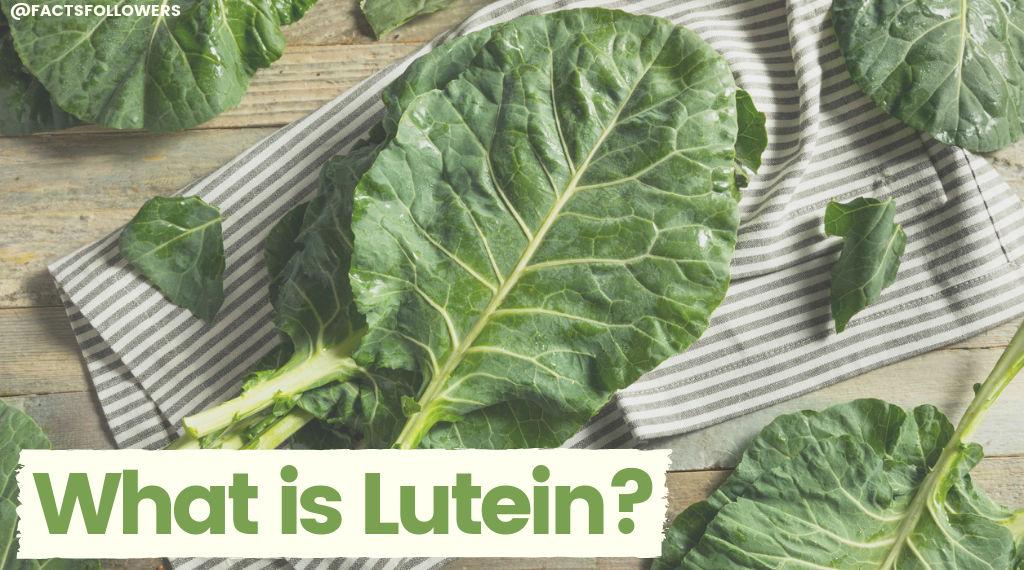- Lutein is an antioxidant that belongs to the carotenoid group. It’s found in high amounts in leafy greens and orange-yellow vegetables as well as dietary supplements.
- Lutein is important for maintaining eye health and reducing the risk of macular degeneration and cataracts. It may also have protective effects on our skin and cardiovascular system.
- There is no official recommended daily intake for lutein, though studies have suggested that 6-20 mg/day has health benefits.
- Most of us don’t consume enough lutein in our diets.
THE BASICS OF LUTEIN
Lutein (pronounced loo-teen) is an antioxidant belonging to a group called carotenoids, which make the bright yellow, red and orange colors in fruits, vegetables and other plants. Antioxidants neutralize the activity of reactive compounds called free radicals, which can cause damage to our organs – and therefore, our health – if their presence isn’t controlled.
Lutein is often found working alongside another carotenoid called zeaxanthin (zee-uh-zan-thin), which is so similar to lutein that they’re frequently combined into one category by information sources like the United States Department of Agriculture’s Food Composition Database, which reports the “lutein + zeaxanthin” content of foods.
LUTEIN AND HEALTH
While lutein’s antioxidant effects can occur anywhere in the body, most of this nutrient’s activity is concentrated in the eyes. Of the many types of carotenoids in our bodies, only lutein and zeaxanthin are found in a specific region of the eye called the macula, which is responsible for maintaining central vision. In the eye, lutein’s role as an antioxidant lowers the activity of free radicals, which can cause damage to the macula and other parts of the eye. Along with zeaxanthin, it helps to absorb harmful high-energy blue light to protect and maintain healthy eyes. Getting adequate amounts of lutein may lower the risk of developing age-related macular degeneration and cataracts. These conditions are the leading causes of visual impairment and blindness in the United States and affect millions of aging people.
Though evidence of lutein’s benefits is less robust in areas outside the eye, lutein may help to protect our skin from damage by ultraviolet (UV) light and promote cardiovascular health.
RECOMMENDED INTAKES
There isn’t an official recommended daily intake for lutein, but randomized controlled trials and observational studies have noted health benefits from consuming anywhere from 6 to 20 milligrams (mg)/day through foods or dietary supplements. Many health professionals specializing in eye health recommend an intake of 10 mg/day, based on the amount used in the influential Age-Related Eye Disease Study (AREDS) 2 Study. Actual intake of lutein for most Americans is estimated at just 1-2 mg/day, meaning that most of us should aim to increase our intake of lutein-rich foods.
The European Food Safety Authority has established an acceptable daily intake of 1 mg/kilogram body weight per day, primarily intended to refer to lutein in the form of dietary supplements, which offers a much more concentrated source of this nutrient compared to whole foods. Lutein is generally recognized as safe (GRAS) by the Food and Drug Administration, meaning that food manufacturers can use it as an additive.
Lutein is considered to be a very safe compound and the risk of consuming too much is very low. One large study found no differences in adverse effects of lutein (10 mg) and zeaxanthin (2 mg) supplementation over five years compared to people who did not consume these antioxidants, and there have been no reports of toxicity.
FOOD SOURCES OF LUTEIN
Even though lutein actually has a yellowish color, it’s found in the highest amounts in green, leafy vegetables like kale, spinach and collard greens (their green chlorophyll masks the yellow pigments). Zucchini, squash, broccoli, corn, peas and brussels sprouts also provide lutein. Carotenoids like lutein are fat-soluble, which means that they’re best absorbed when they’re eaten with some type of fat, such as olive oil or butter. While lower in overall lutein quantity per serving compared to leafy greens and other vegetables, eggs may offer lutein in a form that’s more accessible to our bodies, since the fat found in the yolks may improve its absorption. Lutein can also be found in capsule form as a dietary supplement.
Food | Lutein + zeaxanthin content (mg) per cup |
Spinach, cooked | 20 |
Collard greens, cooked | 12 |
Kale, cooked | 5.9 |
Zucchini, cooked | 4.2 |
Squash, cooked | 2.9 |
Brussels sprouts | 2.4 |
Corn, canned | 2.2 |
Peas, canned | 2.2 |
Broccoli | 1.6 |
Eggs (1 large) | 0.2 |
*Information derived from USDA’s Food Composition Database
